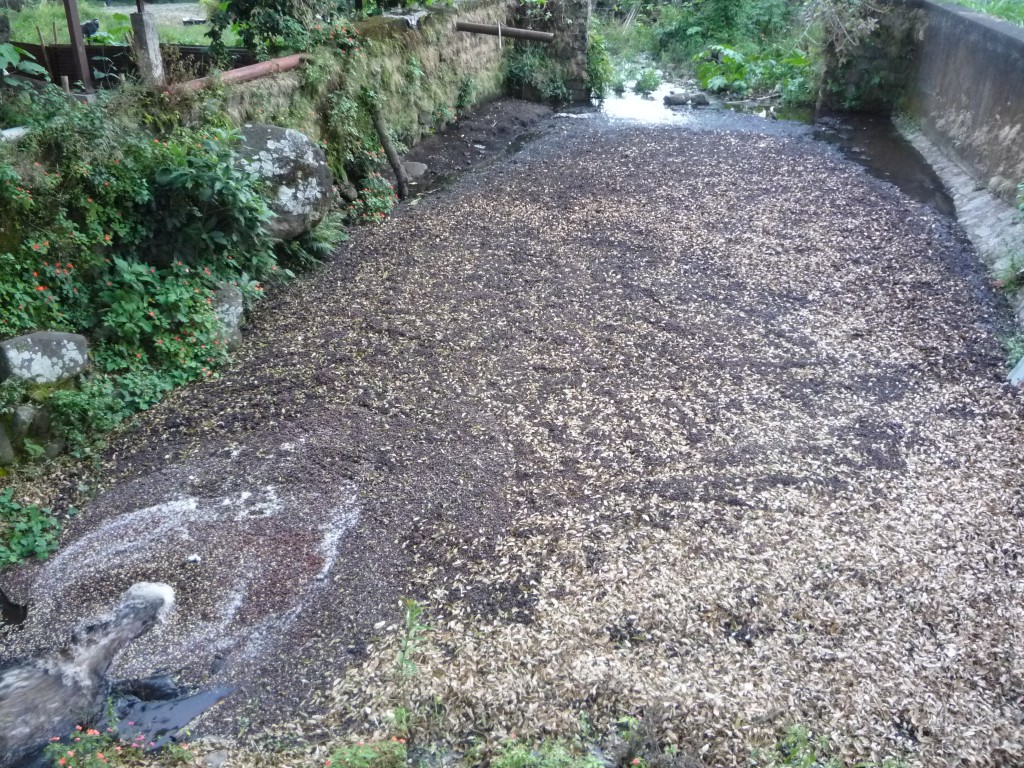Yesterday I highlighted some high-profile initiatives announced last week by specialty roasters in the United States.
The Keurig Green Mountain water stewardship work, in my mind, is particularly impressive for the degree to which it is embedded in the company’s core business: it sees water as both central to its business model and as a central constraint to the economic and human development of communities in its supply chain. For the quality of the thinking behind its strategy: its five-part “water policy” is carefully considered and comprehensive. For the breadth of the water-sector partnerships it has developed: American Rivers, Global Water Initiative (CARE, CRS, IIED, IUCN), Raise the River, charity: water, Water for People. For the scope of its investments: $11 million in new commitments this year. And for its ambitious aspirations for impact: clean water for 1 million people by 2020. Keurig Green Mountain has positioned itself in these ways to be a leader in the sector.
This is not to say that roasters that may share Keurig Green Mountain’s concern for the issue and commitment to act but not, perhaps, its resources, cannot make important contributions to improve water resource management. For most roasters, the best way to be part of the solution may be to avoid becoming part of the problem to begin with. To take care of the water in their own supply chains before thinking about taking care of the water needs of others. But how?

Pulp and wastewater from double-certified coffee being returned, untreated, to a stream in Central America.
I also mentioned in yesterday’s post the TEDx talk of Mariposa Coffee’s Amyie Kao. She makes a moving argument for people to care about what she calls the global water crisis. And she urges people to talk about water resources when they drink coffee. Awareness is an important first step. But we need to move from awareness to action.
Many roasters look first to certifications or codes of conduct to address sustainability issues in their supply chains. These measures can create important incentives for the kinds of farming and milling practices that deliver water services: reducing or eliminating the use of agrochemicals that are a leading source of surface water contamination; improving shade cover for coffee to increase recharge and reduce soil erosion, water sedimentation and agrochemical run-off; and ensuring effective treatment of wastewater from the coffee milling process.
But certifications don’t always address everything relevant to sound water resource management. And in my experience, there is sometimes a gap between what a certification or code of conduct may say on paper and the practices we see in the field. I took this photo on a collective farm in Central America that produces double-certified coffee for the U.S. market. The farm is organic, and the growers carefully protect the water sources on the farm on which downstream communities depend. But they also divert a stream to the mill to convey, wash and soak its coffee, then return the water to stream without any treatment.
Equal Exchange is another roaster I mentioned yesterday. Its Biosphere Reserve coffees are all organic, which means there is no agrochemical use in their production and at least some shade cover. But in addition to organic certification, Equal Exchange also engages directly with its cooperative partners to ensure they are protecting water sources and treating their wastewater effectively. Its 8 Rivers coffee is grown by the Las Colinas cooperative in the western highlands of El Salvador, where we worked with Equal Exchange and the coop to improve water source protection and improve the wastewater treatment systems so Las Colinas didn’t undermine with poor milling processes all the important contributions it was making to improve water quality through sustainable farming and water source protection practices. This remains, in my mind, an interesting example of how roasters can complement mainstream certifications with direct engagement focused on water resource management.
Last year I collaborated with colleagues from CRS and the SCAA Sustainability Council on an article for the SCAA Chronicle that concluded with a list of eight actions roasters can take together with supply chain partners to improve water security in the coffeelands:
- Measure water use at mills in your supply chain and water quality downstream. Report on your results. Track them over time and benchmark your performance against industry best practices.
- Reforest. Help growers in your supply chain increase shade cover in their coffee fields or plant trees on other parts of their farms, particularly any areas adjacent to rivers or streams where they can help reduce soil erosion.
- Protect water sources.
- Reduce the amount of water used in the milling process.
- Reuse water used to convey cherry for the washing process.
- Recycle by-products of the milling process: turn pulp and the sediment from wastewater into compost; treat wastewater and return it to local waterways after it is safe for aquatic life and human use.
- Create incentives for farmers and coops to improve water resource management. Work with growers in your supply chain to set goals for improved performance in these areas and agree on per-pound price premiums or lump-sum payments when they meet your targets.
- Engage with policymakers, both on the ground in the coffeelands and with certifiers whose standards go a long way to influencing grower behavior. Right now, for example, Rainforest Alliance is conducting a major review of its standards, creating oppotunities for influence and improvement of water resource management in the coffeelands.
These measures won’t cost $11 million, but they will make important contributions to water security in the coffeelands.


